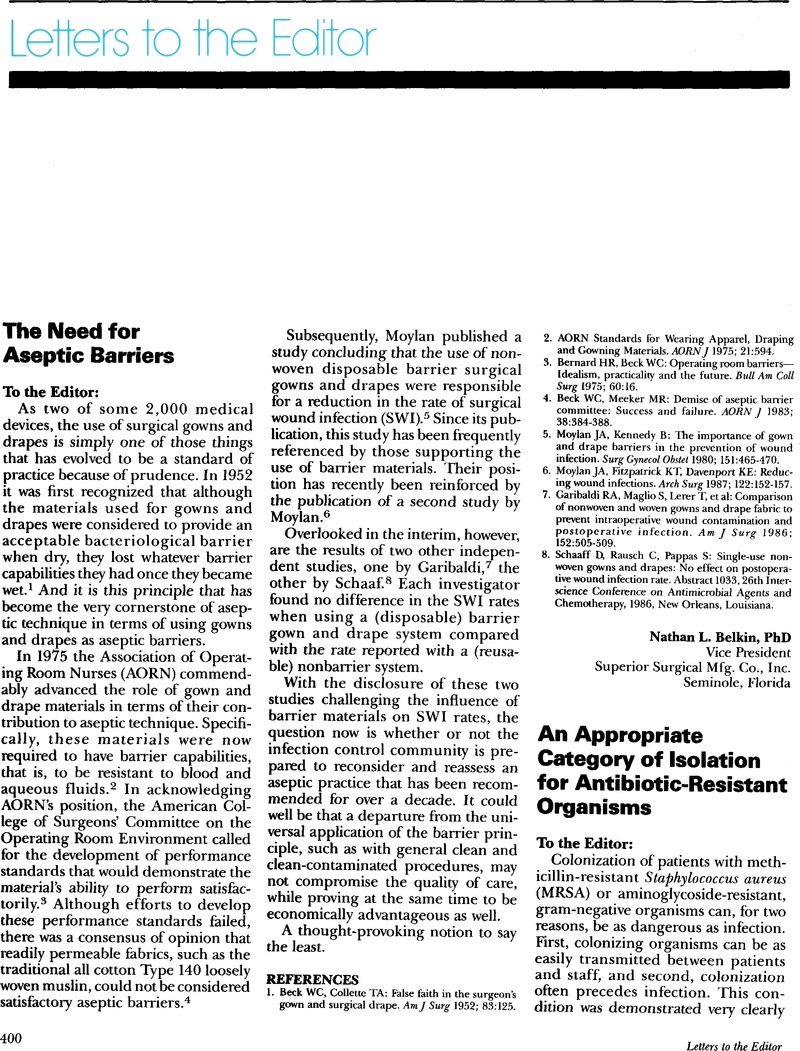No CrossRef data available.
Article contents
The Need for Aseptic Barriers
Published online by Cambridge University Press: 02 January 2015
Abstract
An abstract is not available for this content so a preview has been provided. As you have access to this content, a full PDF is available via the ‘Save PDF’ action button.

- Type
- Departments
- Information
- Copyright
- Copyright © The Society for Healthcare Epidemiology of America 1987
References
1.
Beck, WC, Collette, TA, False faith in the surgeon's gown and surgical drape. Am J Surg
1952;83:125.CrossRefGoogle ScholarPubMed
2.
AORN Standards for Wearing Apparel, Draping and Gowning Materials. AORN J
1975;21:594.Google Scholar
3.
Bernard, HR, Beck, WC, Operating room barriers—Idealism, practicality and the future. Bull Am Coll Surg
1975;60:16.Google Scholar
4.
Beck, WC, Meeker, MR, Demise of aseptic barrier committee: Success and failure. AORN J
1983;38:384–388.Google Scholar
5.
Moylan, JA, Kennedy, B, The importance of gown and drape barriers in the prevention of wound infection. Surg Gynecol Obstet
1980;151:465–470.Google Scholar
6.
Moylan, JA, Fitzpatrick, KT, Davenport, KE, Reducing wound infections. Arch Surg
1987;122:152–157.Google Scholar
7.
Garibaldi, RA, Maglio, S, Lerer, T, et al: Comparison of nonwoven and woven gowns and drape fabric to prevent intraoperative wound contamination and postoperative infection. Am J Surg
1986;152:505–509.Google Scholar
8.
Schaaff, D, Rausch, C, Pappas, S, Single -use non-woven gowns and drapes: No effect on postoperative wound infection rate. Abstract 1033, 26th Inter-science Conference on Antimicrobial Agents and Chemotherapy, 1986, New Orleans, Louisiana.Google Scholar


